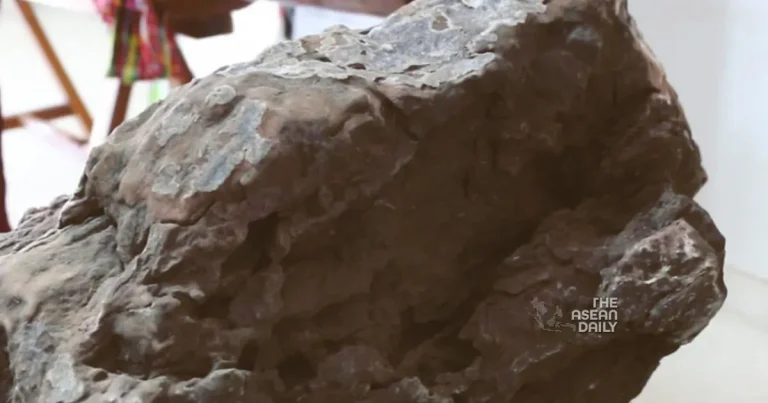8-2-2024 (BANGKOK) A significant discovery of dinosaur fossils, estimated to be as old as 110 million years, has emerged in Nam Phong district of this northeastern province. These fossils are believed to belong to the sauropod and spinosaurid species, shedding light on prehistoric life in the region.
Led by Sasa-On Khansubha, a palaeontologist from the Sirindhorn Dinosaur Museum, along with officers from the Mineral Resources Office Region 2 (Khon Kaen), a team conducted an initial survey on the fossil sites in tambon Muang Wan. Fencing has been installed around the sites to prevent damage by villagers, ensuring the preservation of these remarkable findings.
The exploration commenced on Jan 31 following a post by Chaowalit Boonchai, a local villager, who shared details about one of the fossils on his Facebook account and promptly alerted the authorities.
Ms Sasa-On revealed that the fossils, dating back approximately 100 million to 110 million years, were unearthed with a burrow trace on a fine sandstone layer of the Khok Kruat Formation, part of the Khorat stratigraphic group.
Among the findings are the spine of a sauropod, a majestic long-necked herbivore that roamed the Earth from the Late Triassic to Late Cretaceous era, and the teeth of a spinosaurid, a dinosaur species known for its piscivorous diet during the Cretaceous period.
During the survey, the team also uncovered a fragment of unidentified creature ribs, further adding to the intrigue of the discovery, stated Ms Sasa-On.
The Dinosaur Museum has taken custody of the fossils for essential preservation, while some specimens will be displayed at the Muang Wan Municipal Office’s in-house exhibition.
This newfound treasure holds national significance, providing invaluable insights into the ancient ecosystem and river formations of the region.
Ms Sasa-On hinted at the potential development of the sandstone site with its surface potholes into a small geological attraction in the future, underscoring the educational and scientific value of the discovery.




